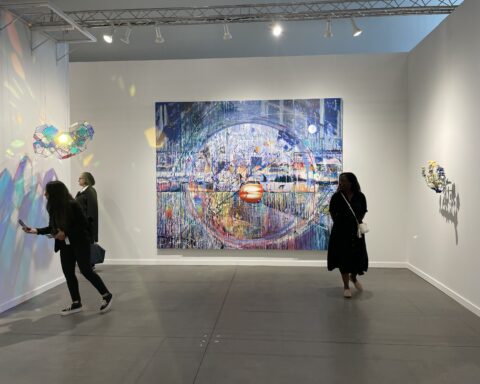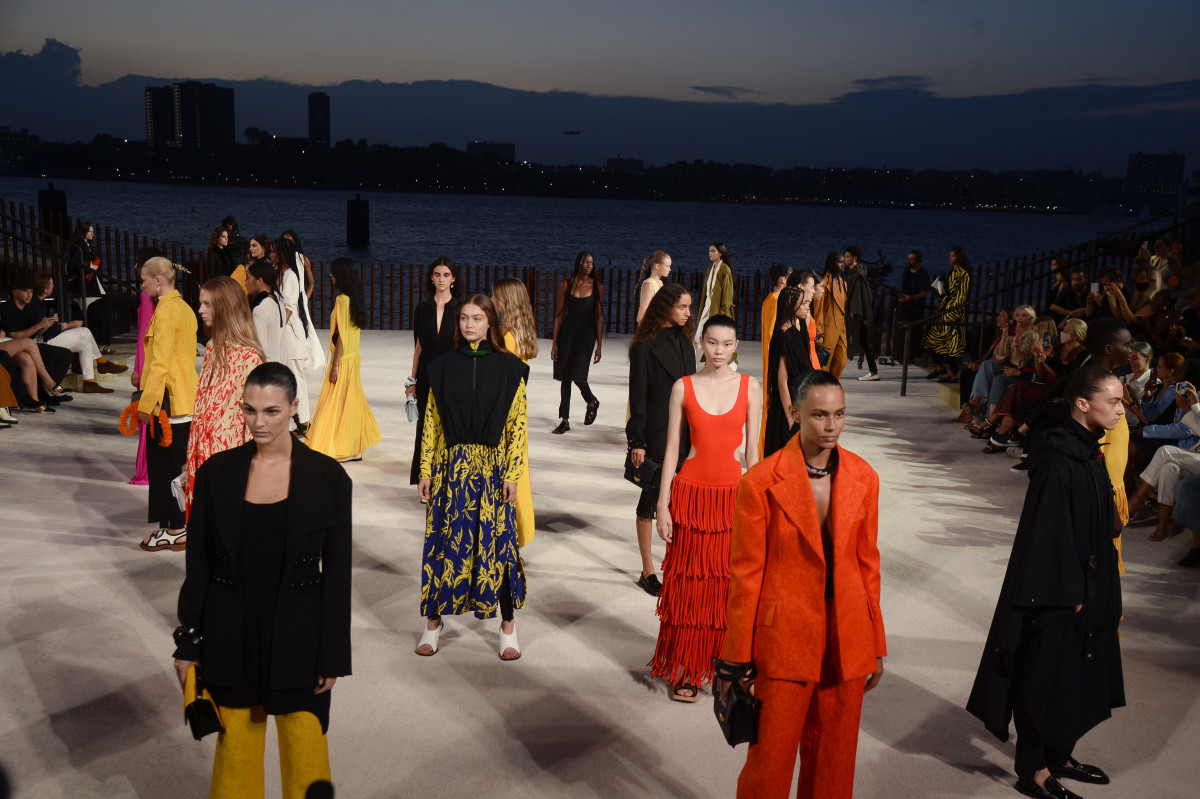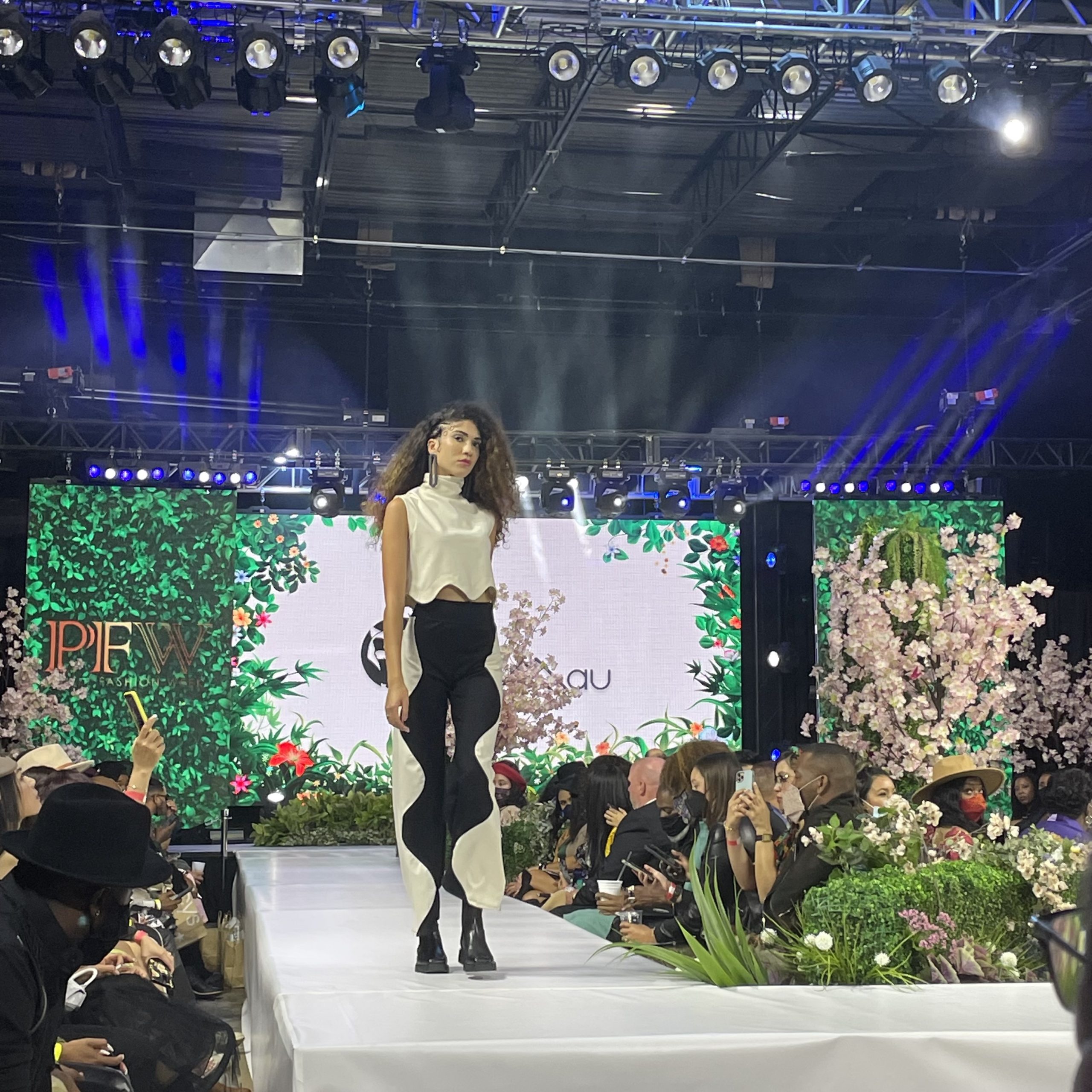
“America is not like a blanket- one piece of unbroken cloth. America is more like a quilt- many patches, many pieces, many colors, many sizes, all woven together by a common thread.”
Rev. Jesse Jackson, 1984 Democratic National Convention
It is from this speech that Andrew Bolton, head curator for the Metropolitan Museum of Art’s Costume Institute, took inspiration when formulating the basis of “In America: A Lexicon Of Fashion.” It’s easy to see both the physical and philosophical spots where Bolton and his team invoked the metaphor.
To start with the physical methods, a quilt was included from the Met’s collection that was begun in 1856 by Rhode Island teenager Adeline Harris Sears and signed by prominent Americans of the era. Then there were the cases within which each look was contained; this was meant to be representative of a quilt, where each design was contained inside of a three-dimensional “patch”.
Then there was the overarching theme of the exhibit, which referenced Jesse Jackson’s speech at the 1984 Democratic National Convention in San Francisco. Whether or not one agrees with the premise of this statement is another matter. Given the times in which we live, the American quilt concept is debatable – making the underlying concept of this exhibition debatable, as well.
The exhibit is divided into twelve categories that Bolton and his team see as being representative of the defining qualities of American fashion: “Nostalgia,” “Belonging,” “Delight,” “Joy,” “Wonder,” “Affinity,” “Confidence,” “Strength,” “Desire,” “Assurance,” “Comfort,” and “Consciousness”. Within each of the exhibit’s approximately 100 ensembles on display, the garments reflect various manifestations of those aforementioned 12 categories – with each descriptor shown to the visiting public via word-bubble headpieces placed above the individual ensembles. Now, for the exhibition itself.


After leaving the opening exhibit space and descending the stairs into the Anna Wintour Costume Center, one is met with four different versions of flag sweaters in the section titled, “Belonging”. The two pictured above, from designers Ralph Lauren and Willy Chavarria (who once worked for Ralph), represent two differing versions of America. In Lauren’s version, America is depicted as a unified place surrounded by light (as evidenced by the sweater’s color); in Chavarria’s America, the country is depicted as falling apart and being surrounded by darkness. While perhaps the designers themselves didn’t have those specific representations in mind, it is a compelling reflection to ponder as America attempts to come back together after a contentious political election year and a continuing global pandemic.


As we travel further into the exhibit, we see more looks that are subsections of the 12 sections that were named by the museum as the labels for American fashion. For example, the above looks by Marc Jacobs and Norma Kamali are designated as “Wonder” and “Snugness”, respectively; while one could hazard a guess at which category that these both fit into, it is not clear with many of the garments where they would fit because there is no clear organization for this Met Costume exhibit. And that is where the primary problem lies.
Having twelve categories with which to keep up – along with descriptors for each individual look that supposedly places them into one of the specified twelve divisions – all became a bit much to contend with, especially when there is also an effort being made to enjoy the exhibit looks themselves. Too much time begins to be spent attempting to figure out 1) how the word given to each ensemble encompasses the spirit of the garment, and 2) under which broader category do the looks fit. That’s not to mention wanting to look at (or analyze, if one is so inclined) the clothing itself. While we believe in intellectual heft, we also believe in presenting a clear direction – and that was missing from the curation of “In America: A Lexicon Of Fashion”. As a result, the exhibit at times felt head-spinning and scattered.


With regards to both the twelve categories and the numerous subdivisions, the categorization of the included looks felt arbitrary – though, according to Bolton in multiple interviews, this was a very studied process. We were left wondering why the curators would choose certain descriptors for certain ensembles when there was no evident relationship between the two. The subdivided titles gave the feel that the Met’s curators picked up a thesaurus and began tossing around words until they found a few that sounded reasonable enough to use.
If we are to look at positives, we respected the fact that the exhibit made a great effort to be inclusive in terms of age, gender, ethnicity, and the like. Many younger designers not known outside of the fashion industry got the chance to have their work displayed at the Metropolitan Museum of Art, and not a lot of people can say that. We’re happy for them, as it is a huge honor to be included alongside some of the most well-known names in the fashion industry.


It goes without saying that the Met left out many worthy names. Where was Bill Blass? What about Willi Smith? Or Ann Lowe? Or Sandy Liang, (since we’re including younger designers)? Though those omissions are glaring, we feel that it is not terribly useful to complain about designers that were left out because their designs could be included in one of the rotations of work that will occur over the life of this exhibit. If on September 6, 2022, certain notable designers were still not shown, then we can have a discussion. We will cross that bridge when we arrive at it.
Last, we’d like to point out that the grid boxes where the looks resided were meant to represent a type of quilt themselves. The boxes, however, acted more as a means of division. Each piece was neatly tucked into the space where it “belonged”, and nothing touched. In a quilt, the edges of each piece touch more – there’s an interlocking that occurs that holds the separate pieces of the quilt together. Being placed in the way that they were – existing within the same space but ultimately being wholly separate – might have said more about present-day America than we know.
The Costume Institute’s “In America: A Lexicon Of Fashion” is the first part of a two-part series that explores American fashion. The exhibit – and its second portion that opens on May 5, 2022 – is open to the public to view through September 5, 2022 at The Metropolitan Museum of Art in New York City.
To subscribe to Manic Metallic‘s Substack newsletter, click here. To follow us on Bluesky, click here.




